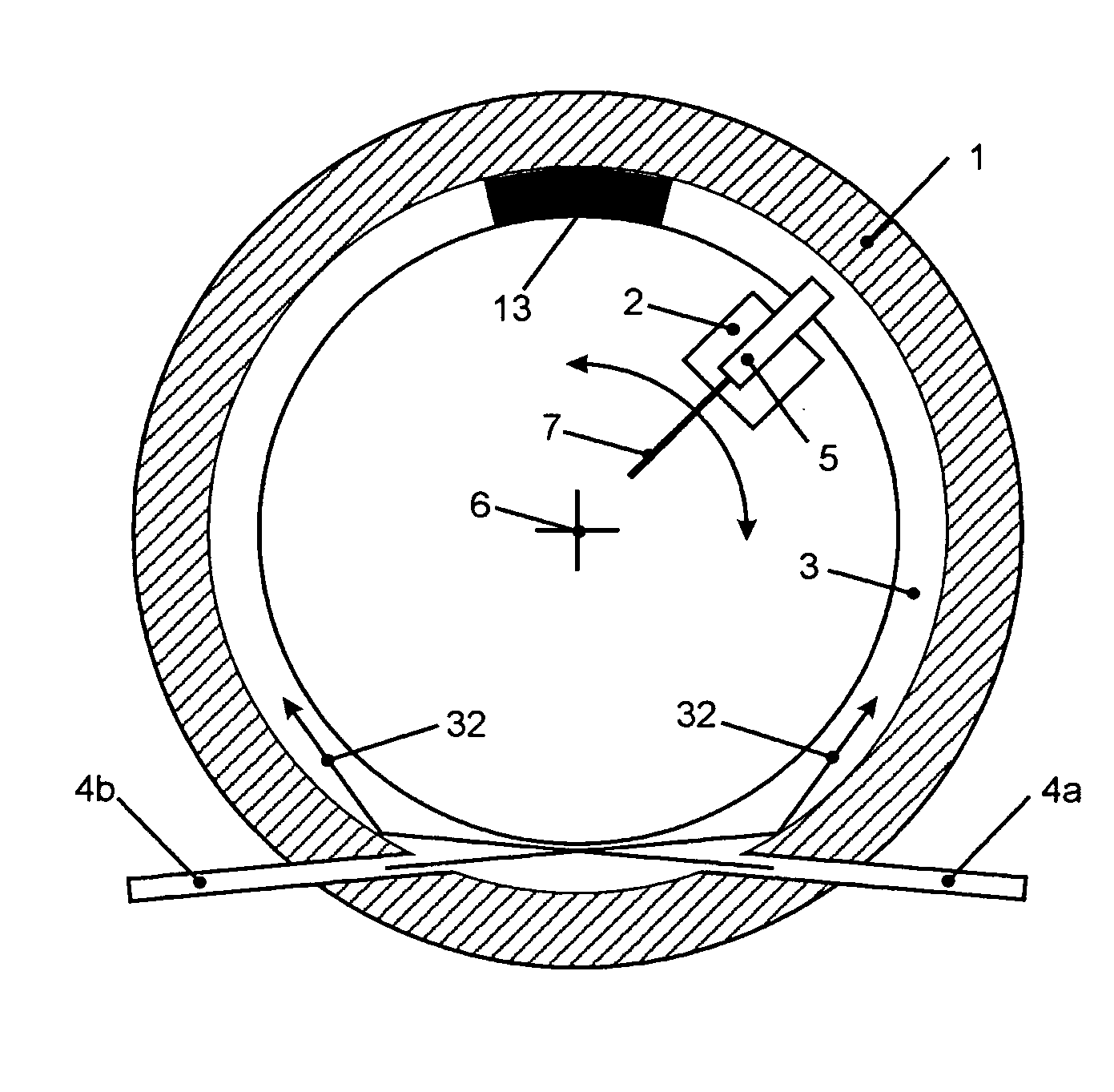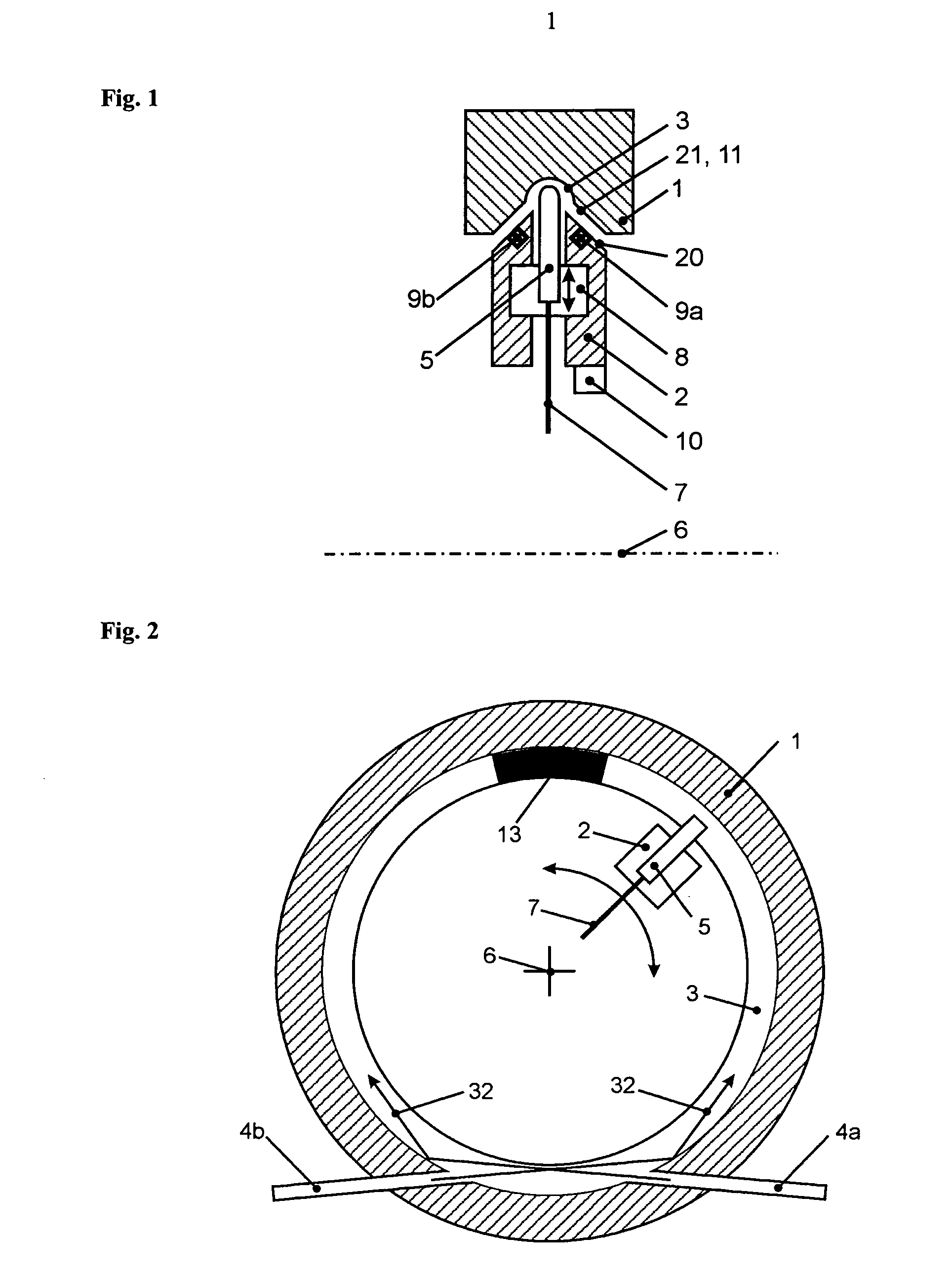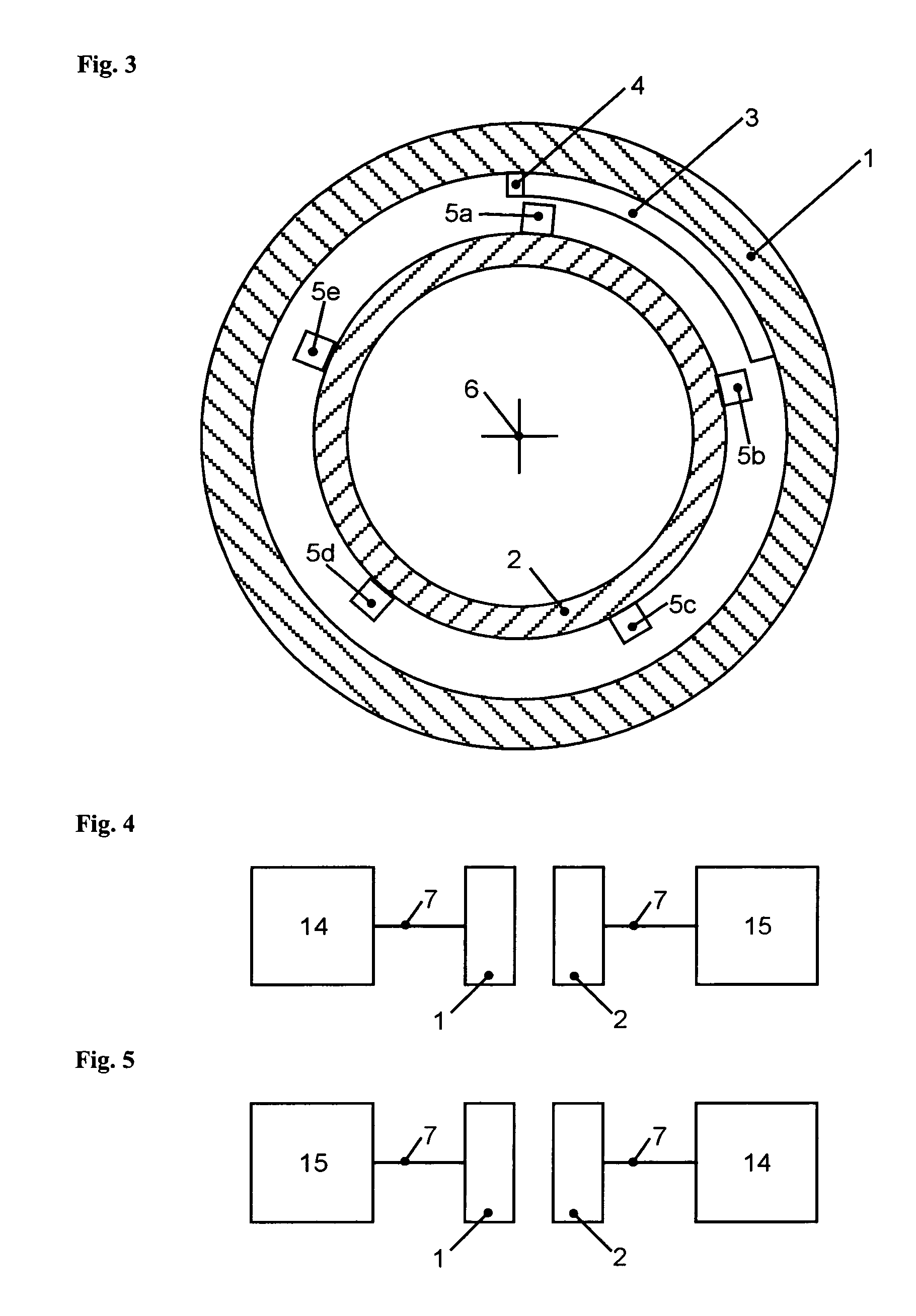Optical rotating data transmission device having an unobstructed inner diameter
a transmission device and optical technology, applied in the field of optical sensors, can solve the problems of inability to use devices, inability to transmit broadband data with modulation signals, and relatively high fabrication costs, and achieve the effect of simple and cost-effective, easy to distinguish, and simpl
- Summary
- Abstract
- Description
- Claims
- Application Information
AI Technical Summary
Benefits of technology
Problems solved by technology
Method used
Image
Examples
Embodiment Construction
[0012] The invention is based on the object of designing a device of relatively low cost for transmitting optical signals between two units which are rotatable relative to each other, so that a reliable transmission with low optical attenuation is made possible for large diameters, high mechanical movement speeds, and high data rates. Furthermore, it is the object of a special development of the invention to design the device so that even signals having period lengths which are small in comparison with the time of the propagation of the light around the circumference of the device may be transmitted.
[0013] A further object of the invention is that of further developing a fiber-optical sensor as known in the art so that it is adapted to perform measurements laterally of the fiber. Furthermore, this fiber-optical sensor is required to be of small constructional size and inexpensive, and therefore capable of being built without any additional separate optical components for beam defle...
PUM
 Login to View More
Login to View More Abstract
Description
Claims
Application Information
 Login to View More
Login to View More - R&D
- Intellectual Property
- Life Sciences
- Materials
- Tech Scout
- Unparalleled Data Quality
- Higher Quality Content
- 60% Fewer Hallucinations
Browse by: Latest US Patents, China's latest patents, Technical Efficacy Thesaurus, Application Domain, Technology Topic, Popular Technical Reports.
© 2025 PatSnap. All rights reserved.Legal|Privacy policy|Modern Slavery Act Transparency Statement|Sitemap|About US| Contact US: help@patsnap.com



